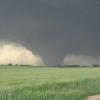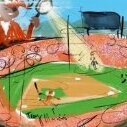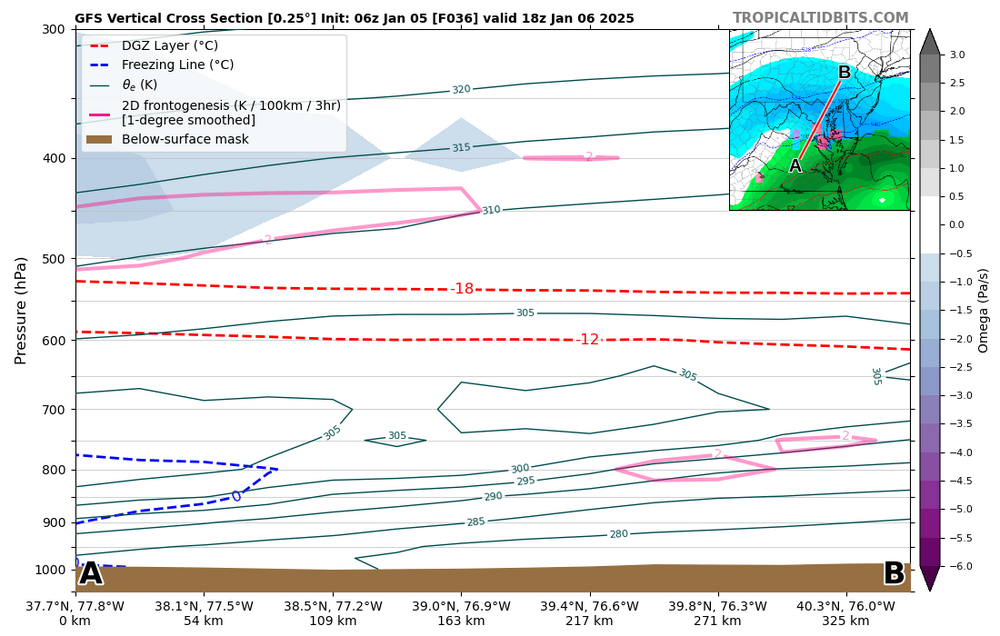-
Posts
1,619 -
Joined
-
Last visited
About heavy_wx

Profile Information
-
Four Letter Airport Code For Weather Obs (Such as KDCA)
KDCA
-
Gender
Male
-
Location:
North Bethesda, MD
Recent Profile Visitors
4,137 profile views
-
Measured about 5" of accumulation here. There are currently some large aggregates falling within the region of 30+dBZ reflectivity in southern MoCo.
-
Interesting signature for banding in the 06z GFS (and 06z 3-km NAM) around 12z-18z Monday, just as the dry air starts to work in above 600 mb. This dry air above the lower-level moisture produces convective instability above the frontal surface between 750-650 mb south of the frontogenesis max around 800 mb. This instability would favor vertical motion and ice crystal generating cells just to the north of the approaching dry air. Given the temperatures > -12C and the likely presence of supercooled water, graupel is a definite possibility within this area of precipitation.
-
Saw the bright pink colors here in southern MoCo.
-
Getting some melting snow here in the heavier bursts of precip.
-

Thursday 1/20/22 Stat Padder Discussion and Observations
heavy_wx replied to stormtracker's topic in Mid Atlantic
Wet snowflakes just starting to mix in here. -
Snow mixing with sleet now in North Bethesda.
-
Aggregates starting to get bigger here as the temperatures warm aloft and the band of heavier snow approaches.
-
Flurries here in North Bethesda.
-
Some flurries now in North Bethesda.
-
39.14N, 76.85W
-
Moderate-sized aggregates falling now.
-
Light snow with small flakes here.
-
If the clouds do hold off ahead of the cold front, it could be one of those days where the models underestimate surface solar radiation (and thus surface temperatures) owing to the lack of foliage this time of year.









